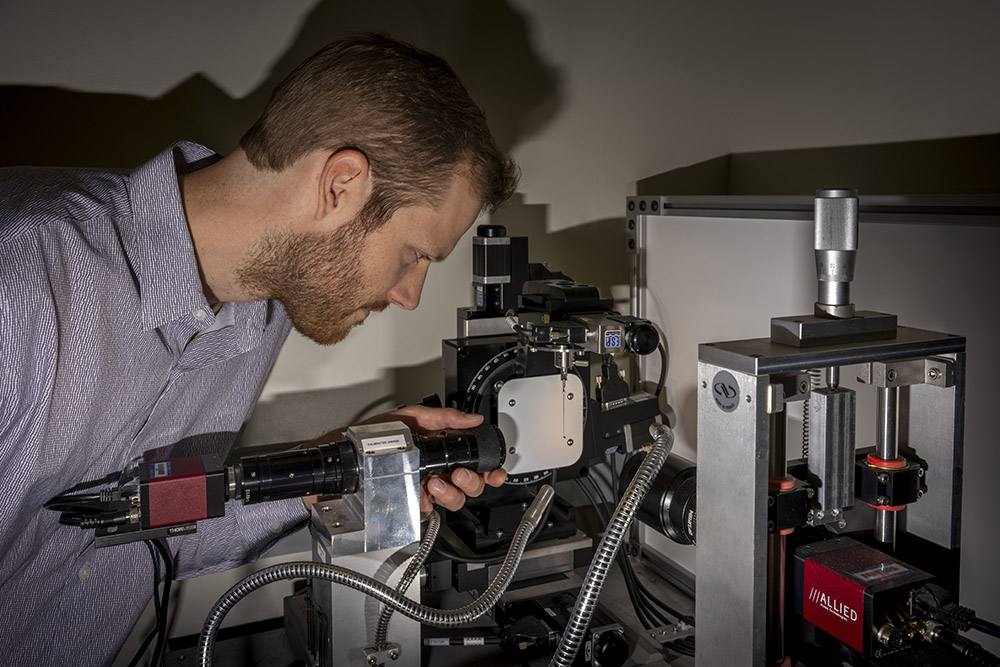Postdoctoral Fellow Spotlight: Graeme Sutcliffe

When were you hired at LLNL?
I joined the Lab on September 18, 2023.
What are your degrees in?
I have a PhD in Physics from the Massachusetts Institute of Technology (MIT). I have a bachelor of applied science in engineering from the University of British Columbia (UBC).
What is your scientific background in?
I did my undergrad in Engineering Physics at the University of British Columbia (2015). I spent one work term writing software for a group at the University of Calgary, studying the aurora. I spent another research term building a laser for one of the physics groups at UBC. After that, I joined the High Energy Density Physics group at MIT, where I was excited by the breadth of problems that could be investigated using large laser facilities like OMEGA and NIF.
What is the main focus of your LLNL postdoctoral research?
My main focus is trying to understand one aspect of how magnetic fields are generated in plasmas, which is important for our understanding of both astrophysical-scale systems as well as laboratory scale ones, like inertial fusion designs. Specifically, I am studying how magnetic field structures generated by the Weibel instability (a rather common kinetic instability in laboratory plasmas) coalesce to larger scales. If they do it more efficiently than we previously understood, then it could change how we understand the origin of large astrophysical magnetic fields that permeate galaxies. It might also have an effect on how well we can couple laser energy to inertial fusion targets, which will impact how these targets are designed.
What are some of the “big” science questions you seek to answer?
How are magnetic fields generated in galaxy-scale plasmas? How are magnetic fields generated in inertial fusion plasmas, and what effect do they have on design performance? How can we utilize large laser facilities to support both of these questions?
What is your favorite part about your current research?
I enjoy the problem-solving aspects of designing an experiment. The relief/satisfaction when a long-planned experiment is executed successfully is a great feeling.
Could you provide a high-level overview of your research processes or a major project you are currently involved in?
I primarily conduct experiments at the OMEGA laser facility at the University of Rochester. There, I use the laser’s 30 kilojoules of energy to generate astrophysically relevant plasma conditions to study how magnetic fields are generated.
I measure the magnetic fields using a technique called proton deflectometry (sometimes called proton radiography). I measure the plasma conditions using Thomson scattering, where details of the plasma conditions are encoded in the scattered light spectrum. Back in the office, I analyze my proton radiography data using techniques which decode the magnetic field from the distribution of particles on the detector.
Before an experiment, I use FLASH hydrodynamic/magnetohydrodynamic simulations to predict the plasma conditions that will be generated in an experiment, and then after an experiment I refine the simulations to match the plasma conditions we measure and help fill in the gaps between measurements.
What makes the HEDS fellowship unique?
The HEDS fellowship offers me both the freedom and the resources/tools to pursue the physics questions that I think are important and interesting.





